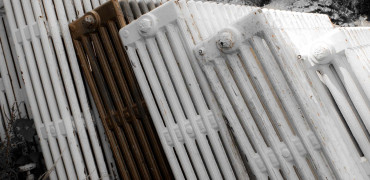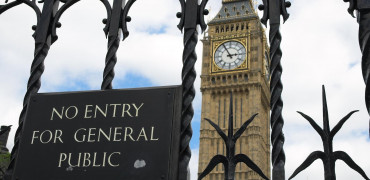Mitsubishi Electric has recently been working with BESA (Building Engineering Services Association) to look at Indoor Air Quality.
It may have passed you by, but the 15th Of June was CLEAN AIR DAY in the UK which very much focuses on ‘outdoor air quality’ and reducing outdoor pollution levels.
https://www.actionforcleanair.org.uk/campaigns/clean-air-day
The United Nations has chosen the 7th of September to be the ‘International Day of Clean Air for Blue Skies’, which along with their ‘BreatheLife’ campaign also looks at the detrimental effects of poor outdoor air quality.
All very important work, when outdoor air pollution is so bad.
If your vehicle doesn’t meet the emissions standard then you shouldn’t be allowed to drive it!
A bad taste in the mouth
But the work that Mitsubishi Electric and BESA have done, focusing on ‘Indoor’ air quality really struck a chord with me.
When I was very young, I distinctly remember being inside certain buildings when the quality of the indoor air I was breathing in just didn’t seem right.
I was way too young to analyse why, but some buildings I spent some time in literally left a bad taste in my mouth. They were buildings with very poor ventilation and too much stale air trapped inside them.
In stark contrast to these bad buildings, I remember when i was around the same age, that I loved spending time in my local public library, not just because I loved reading and I loved books, but because I can distinctly remember how clean the air was inside the building.
It just felt fresh as soon as you walked in.
As I’m writing this column my senses are buzzing when I think back to what that space felt like and I’m convinced that the freshness of the indoor air played a major part in making me love it so much.
A real killer
Poor air quality is deadly. Figures from Public Health England show that pollution causes between 24,000 and 36,000 deaths every year.
According to the government, air pollution is the 4th biggest killer after cancer, obesity and heart disease.
Outdoor Air Quality (OAQ) really matters, but Indoor Air Quality (IAQ) REALLY matters too and I’m afraid we aren’t talking about that enough.
The air in our homes, schools and workplaces is contaminated with polluted air from outside, but also from impurities that are generated indoors.
This is something that affects all of us, but air pollution can be particularly damaging to children, whose lungs haven’t yet fully developed.
Take the tragic and heartbreaking story of Ella Roberta. Brought up in Southeast London and very healthy at birth.
Just before her 7th birthday she developed a chest infection that turned into a persistent cough. Ella was diagnosed with Asthma.
Unfortunately, asthma has become all too common to the point where, as a society, we just accept it. 5.4 million people in the UK are Asthmatic, 1.1 million of them children.
When I was at school, I remember a number of my friends having inhalers and sometimes suffering from asthma attacks.
It was awful to see. Frightening for them to experience. Being asthmatic and surrounded by very poor quaintly air can be fatal.
Illegal levels of NOX
Just short of her ninth birthday, on the 15th of February 2013, Ella died of a fatal asthma attack. Devastating!
On her original death certificate it said she died of ‘acute respiratory failure’. There was no mention of air pollution.
Ella’s mum, Rosalind, began to think that there maybe a link between her daughter’s death and poor air quality, so she began to do some research.
She discovered that there were extremely high pollution levels in the area they lived the night Ella had her fatal asthma attack.
The very heavily congested South Circular Road, very near to where Rosalind and Ella lived, had ILLEGAL LEVELS OF NITROGEN DIOXIDE caused by traffic.
I know the North Circular and South Circular Roads in London very well and I’m afraid you can taste the disgustingly high levels of pollution in the back of your throat in seconds when you’re close to them.
A significant factor
In 2019 there was a new inquest into Ella’s death and the findings made legal history.
The Coroner’s report provided powerful leverage for change.
He concluded “Air pollution was a significant contributory factor in BOTH the induction and exacerbations of (Ella’s) asthma….and she was exposed to levels of Nitrogen Dioxide (N02) and particular matter IN EXCESS of Word Health Organisation Guidelines”.
That pollution would have severely contaminated the inside of Ella’s home the night she died.
The coroner put the government on notice that “a failure to reduce air pollution to safe levels will cost lives”.
Ella’s death certificate was changed after the inquest.
She was the first person in the world to have ‘AIR POLLUTION’ listed as a cause of death on her death certificate.
Whenever I travel through a town or city with high levels of pollution, or when I’m inside a badly ventilated building with poor air quality, I think about her. We all should.
We must campaign in our local communities to reduce air pollution in the places where we live.
We should be lobbying our local MPs, lobbying local government and pushing national government to give us the clean air we all want and have a right to.
We have to work together to make a difference beyond the boundaries of our own home.
ULEZ doesn’t go far enough
For me, the controversial Ultra Low Emission Zone (ULEZ) in London is a great step forward by Transport for London, but I actually don't think it goes far enough.
At the moment, if your vehicle doesn’t meet the ULEZ Emissions Standard you will need to pay a £12.50 daily charge to drive in the zone.
Personally, I think that if your vehicle doesn’t meet the emissions standard then you shouldn’t be allowed to drive that vehicle at all!
Controversial I know, but if we really want make a difference and dramatically transform our heavily polluted inner-cities AND SAVE LIVES then we have to be much bolder with our ‘green’ polices and rules. I’ll give you one example why.
A good friend of mine has a car in London that doesn’t meet the standard. He was going to sell his car and upgrade to a newer model to comply with the standard and avoid the £12.50 daily charge.
However, he then told me “I’m not upgrading my car. I’ve done the maths. It will be cheaper for me to keep the car I’ve got, which I’ll get another 3-4 years and another 100,000 miles out of, and pay the £12.50 ULEZ charge every day, than for me to borrow more money to buy a newer car and avoid the ULEZ charge. I’m sticking with what I’ve got”.
I’m sure there are many other people out there thinking exactly the same.
Surely, banning polluting cars in our city centres (particularly London) by a certain date is a more bold and powerful step than simply allowing people to carry on driving them, but charging them for doing so.
A wider zone is needed
The London ULEZ scheme is expanding from the 29th of August 2023 across all London boroughs.
Sounds great in principle, but then I discovered that the North Circular and South Circular roads are not included.
Absolutely bonkers when they are the two of the worst polluting roads in London and we know the devastating impact the illegal levels of Nitrogen Dioxide had on poor Ella Robert’s life, who lived closer to the South Circular.
Just daft in my book. Get both of those roads in the ULEZ zone!
It is obviously very difficult for us as individuals to have any control over external air conditions, but we can try and minimise air pollution inside our homes.
Our homes have the opportunity to be safe havens.
A safe haven
If you live in an area with high levels of outside air pollution you will obviously want to minimise opening doors and windows.
This is a shame when we all love fresh air through our house in the summer, but of course you don't want air coming in if it’s bad.
And this is where you have to be careful.
You want to seal up your house to avoid poor quality air coming in and to reduce heat loss escaping out during the colder months, but the more your house is ‘sealed’ the more ventilation you need to remove the dirty air inside your home, which has originated from everyday activities.
Everything from scented candles, to cooking, dusting and sweeping creates particles of matter that aren't great for our lungs.
Even the air we breathe out could be considered ‘dirty’ so we need ventilation to get rid of it all.
Mechanical ventilation is the best way to do this, particularly good quality ventilation units that have very good filters within them, as they can allow clean, filtered air to come into your house, while also removing any dirty air you’ve created indoors.
Filters within ventilation units make a huge difference and play a big role in removing pollutants. You just need to make sure they are regularly cleaned to be fully effective.
By the way, when was the last time you cleaned or checked the filters in the extractor hood over your kitchen hob? You might want to take a look.
Avoiding mould
Also, it is so important to avoid any damp anywhere in the house, particularly in high moisture areas like bathrooms and shower rooms.
Mould caused by damp is absolutely terrible for our lungs, our breathing and overall health and well-being.
So many people turn off their bathroom extractor fans because they are noisy, but they really shouldn’t! That extractor fan is going a very important job.
If the noise really bothers you that much, go out and buy a newer, quieter model, which will be way more efficient that the old one you’ve probably been using for years.
Energy efficient ventilation
Mechanical ventilation with heat recovery (MVHR) is definitely the way forward and I’m pleased to say I’m seeing amazing systems being installed in so many good quality, new-build houses across the country.
They get rid of the poor quality air indoors, recycle the heat from that air and bring in good-quality fresh air that has been cleaned and filtered.
High-quality, well-designed MVHR systems can be life-changing in creating a healthier home. Clean air is so important.
The list of ingredients
But, just think for a moment about how little we know about the air we breathe around us.
Compare that lack of information with something like food and drink. When it comes to food and drink we are bombarded with information (and rightly so) about where it was produced, what is in it, how many calories it gives us etc etc etc.
Sometimes on the packaging we are even given the personal name of the farmer/producer who made it.
We now know so much more about the food and drink we consume. We eat around 2kg of food per day and drink around 3kg of fluids per day, so it is only right we know exactly what we are consuming and what effect it has on our body.
But did you know that the average adult, when resting, inhales and exhales around 13kg of air per day and we have ABSOLUTELY NO IDEA what it is in the air we are breathing in everyday.
We have no idea whether the air our kids are breathing is good or bad.
Surely, this HAS to change, so we need more air monitoring, we need to be given more information about the quality of air where we live, we need better quality mechanical ventilation inside our homes AND we need to massively reduce the amount of air pollution we have in our towns and cities.
Thousands and thousands of lives depend on it.
George Clarke is an Architect, writer, TV presenter and Ecodan Ambassador




